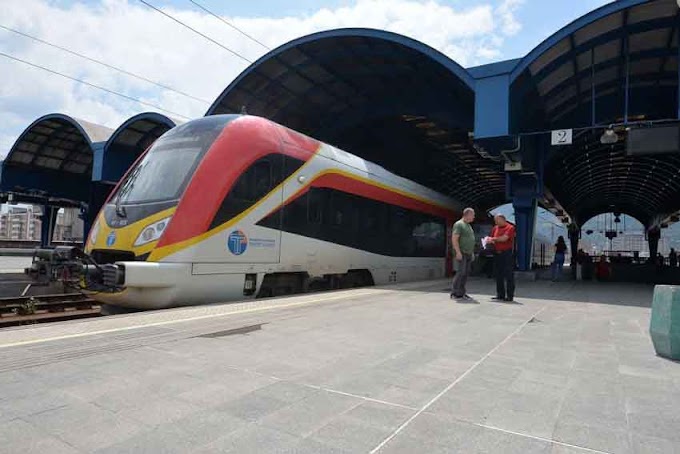Every place has its own image and soul, colours and scents, people and events it is known for and making it special, even in its inevitable transience.
The road to Selci and the story about those two and Malesia, told from generation to generation, leads beside the beautiful Lake Globochica, all the way to the Globochica hydro power plant. From this point, the village can be reached through a narrow and steep path passing through colourful mountain landscape. The infrastructure and the ruined old road is an unpleasant image mirroring the current negligence of the region that is full of people from early spring until late autumn.
There are two villages located in this part of the wooded slopes of Stogovo Mountain – Selce and Burinec, interconnected throughout history, both economically and ethnically, but each of them with its own history and development. They are separated by Stajilska, or Selechka River. Selce, the birthplace of Chernodrinski and Jovkov, is on the right side of the river.
A suitable name for its people
The current village of Selce hasn’t always been located at an altitude of 1.050 metres nor has it always been called that way. The first residence of the locals was called Stajlo or Slailo was located much lower.
“It is a very old village and the first record of it dates back to 1863 as Selce Dolno. According to some of locals, the village got its name because it used to be small” – Paunkoski says.
The population of the village soon reached 1.050, consisting of 150 to 180 houses, and Selce soon became an important Macedonian Orthodox settlement.
The following years, especially after the end of the Ilinden uprising, many of the people went to work in America. Most of the families were patriarchal, consisting of at least 7 descendants, which is why even the Ottoman soldiers and bandits were wise to stay clear of trouble. The people of Selce were always armed, even when going to church and whereas they were carrying guns and rifles at the time, to this day, their words and deeds have still remained their biggest weapon.
The origins of unyieldingness
The trademark and pride of Selce and Macedonian history, as the story goes are the two village leaders, Priest Jon, or Jovan Slavkoski and Atanasij Tanasko Jovkov and their sons – Vojdan (Slavkoski) Chernodrinski and Arseni Jovkov – brilliant but tragic personas, just like the era in which they lived.
Jon was the village mayor for thirteen years before becoming a priest in 1889.
“Priest Jon Slavkoski was sentenced to 101 years in prison during the Ottoman reign and was sent to Anatolia. He was sent back to Macedonia after the Hurriyet. He was killed by rebels in his own house in 1943 and was buried in the yard of the “Saint Nicholas” church” – Ljupcho Paunkoski documentary reveals.
Priest Jon was a man revered by generations after his death. People even tell stories about his endeavours. One of them is about the encounter between Jon and Raim the robber.
“They aimed at each other, but instead of shooting, knowing that he would die, Raim took his axe in anger and butchered his own mule!”
However, faith caught up with Priest Jon and he and his family were killed in their own birthplace.
Faith was even crueller to Jovkov’s family. He was responsible for the opening of the first school in Selce, which was “unseen and unheard of at the time”. It was a “miracle” that brought light into the dark Malesia in the form of education. The first teacher in Selci was Marija Slavkoska, who graduated from teaching school in Wien.
 |
| Arseni Jovkov |
Unable to cope with his father’s death, Tanasko’s oldest son, Niko Jovkov became leader of the first revolutionary cells in the region as soon as VMRO was formed. When Niko died, his younger brother, Arseni, got involved, becoming the leader of his brother’s group and was an authentic chronicler of the situation in Macedonia at the time and the Ilinden uprising.
The people of Selci preserved the memory of the village’s greats by building a memorial monument in the centre of the village. The marble plate says: “Vojdan Chernodrinski (1875 – 1951) and Arseni Jovkov (1884 – 1924). This country will remember them for being its part and a shining mark of its rise. Grateful Macedonia, Selci, 1979.”
Word as a blade
You must have heard the saying “Like father, like son”. Arseni Jovkov and Vojdan Chernodrinski and their fathers are certainly a good example of it. Those young people continued to walk on the path set by their fathers, with their own way and their own weapon, until their final hours.
 |
| Vojdan Chernodrinski |
It is truly remarkable how the “ignorant” peasants from Selce became part of Macedonian history, culture and art. How did it even occur to Chernodrinski to establish his own Macedonian theatre in Sofia and secure a repertoire of his own Macedonian dramas in Macedonian language during such difficult times? How did Jovkov “sharpen” his striking journalistic word, more powerful than a lightning? Where did his courage, persistence, strength and uncompromising attitude come from?
Jovkov’s idea to eternalize the 20th anniversary of the Ilinden uprising, when Goce Delchev’s remains would be placed in the premises of the Ilinden organization in Sofia and later transferred to Skopje, in the early days of film when it was still just an attraction, was brilliant. He was also very serious about his idea to write a script and shoot “a monumental historic spectacle about Macedonian life and struggles, which seem to be our inevitable destiny”.
The answer to all these questions probably lies somewhere deep in Malesia and Stogovo. Their extraordinary beauty will give you a clear mind, strength, motivation, verve, etc. and that is why this place will never be forgotten. People keep returning to their birthplace to stay as long as they can, and leave again, until the next time.











